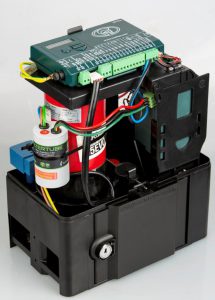The celebrated American writer Mark Twain, author of such classics as The Adventures of Tom Sawyer, once reflected on the awesome powers of nature by saying that “thunder is good, thunder is impressive; but it is lightning that does the work”.
Unfortunately, this “work” often involves obliterating electronic equipment with the kind of nonchalance that is to be expected from a force carrying several million volts of electricity. In the majority of cases, whatever hapless piece of equipment draws the ire of a particularly bad-tempered cumulonimbus cloud, is criminally outmatched.
While there is no way to prevent lightning from striking one’s electronics – nature being unpredictable and all – surge protection devices do reduce the likelihood of said electronics being reduced to a heap of smouldering ash.
But how exactly do surge protectors do this?
Well, when there is a lightning strike or electrical surge, there is a sudden – and dramatic – increase in voltage (this is sometimes known as “transient voltage”), which most domestic appliances just aren’t equipped to deal with.
Most modern surge protectors make use of a component known as a metal oxide varistor, or MOV, which is a kind of diode with an internal resistance that varies depending on the applied voltage. If the applied voltage exceeds a certain level, the MOV decreases its resistance to divert the excess current to ground and away from the connected electronics.
A transient-voltage-suppression diode, or transorb, is another commonly-used component in surge protection circuitry but, unlike MOVs, a transorb doesn’t divert current to ground, but rather “clamps” or “shunts” overvoltages above the component’s specified breakdown voltage.
Some surge protectors, like our brand new plug ‘n play device specifically designed for gate motors, also include what is known as a line filter, a type of circuit that works like a sieve and “filters out” the electrical noise (“mains hum”) sometimes caused by alternating current. This noise can get into audio equipment such as intercoms and negatively affect its speech quality, not to mention sounding like something recorded by NASA during one of their deep space missions.

Get your plug ‘n play surge protector today and say goodbye to fried gate motor electronics and mains-borne noise.





